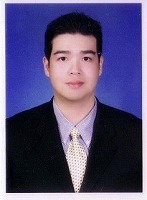Reader's Voice |
|
PDF Version is available: Click here |
My first chance to become familiar with JSCE was as a graduate student, in 2002. I came across the JSCE Concrete Library International (CLI) series, the English translation of the Japanese periodical, in the library at the Uomoto-Kishi-Kato Laboratory, University of Tokyo. I found it particularly interesting that the investigations published in CLI involved not only extensive study but also practical application in real situations. It is unfortunate that this series came to an end in 2004. But the JSCE Concrete Committee then began a new series of interesting publications: the English translations of the JSCE standard specification, or what many of us call the "yellow books." Little by little, many of the standard specifications or recommendations relating to concrete engineering, ranging from design and construction to maintenance, and including special materials and construction techniques, have been published. These publications brought to my attention the great effort and contribution made by the JSCE Concrete Committee.
Coming back to the JSCE Concrete Committee newsletter, I have recognized its importance since last year when we held the joint seminar between JSCE Thailand chapter, JSCE, Thailand concrete association (TCA), and ACI Thailand chapter on the topic of "Recommendation of design, prevention and repairing RC structures against earthquake and tsunami based on JSCE standard". As usual, the JSCE Concrete Committee newsletter consisted of many sections, but somewhere was the note that the JSCE standard specification is available for free download at http://www.jsce.or.jp/committee/concrete/e/. I browsed to the address and found myself fascinated; a series of the most up to date "yellow books." What a convenience for engineers overseas to have available one of the most complete and up-to-date standard specifications and recommendations in the field of concrete engineering.
As a young engineer reading the back numbers of the newsletter, I found myself following two sections in particular. One is the special report section covering current hot issues. For example, in newsletters 25-27, the damage caused by the Great East Japan Earthquake were reported. Naturally, I want to express my deepest condolences to Japan for this terrible tragedy. But I was interested to see that, because most structures had been strengthened for shear resistance after the Great Hanshin Earthquake, totally collapse was not commonly observed. Only cracking, flexural failure, and large displacement of some members was found. The methods used for immediate repair and strengthening were also reported. I read about the severe structure damage caused by the tsunami, which exceeded expectations of height and caused uplift forces on girders. As well as, the detail design to prevent falling down of the girder due to earthquake caused failure of the bridge piers. This is a new and completely unexpected cause of failure. With Thailand experiencing more frequent large ground motions originating in nearby countries and susceptible to tsunami, especially in the south, these reports are very useful for Thai engineers and others. They help us understand the failure mode of structures under both earthquake and tsunami loading.
Another section that I bookmarked is the report on meetings of subcommittees under the JSCE Concrete Committee. Each subcommittee contributes to a different field and consists of many professionals, both academic and industrial. The reports of their meetings illuminate the valuable missions they pursue, their vision, and the results of workgroups responding to current and future demands in concrete engineering. For example, newsletter 28 (the latest) reports on the meeting of the JSCE standard specifications for concrete structure revision committee. The vision and targets of the editor-in-chief of each standard specification are discussed. The report leads us to expect great improvements after the revision, such as consideration of individual conditions (materials, construction, deterioration) in the design of structural performance and the linking of design standards with maintenance standards for a more practical approach.
The discussion concludes by noting that part of the mission is to disseminate the JSCE standards internationally. As a member of the committee of the Thailand Concrete Association (TCA), I'm also interested in the idea of a mutual international standard, which is one of the goals for everyone. However, different conditions prevail in each country. This means that international collaboration must play a role in the development of this mutual international standard. With the Asian Economic Community (AEC) to be formally established in 2015, the need will be greater. There will be a freer flow of products, investment, labor and services among the ten ASEAN countries and the group may later grow to include China, South Korea, and Japan. We must all prepare for this coming opportunity and the potential risk it brings.
Before concluding, I'd like to remind you that the fifth international conference of the Asian Concrete Federation (ACF2012) will be held in Pattaya, Thailand between October 24 and 26, 2012. I would like to take this opportunity to invite all of you to join us at this conference, to make it a venue for the exchange of information as well as for the many other activities such as technical meetings and social gatherings. You can find more information at http://acf5.thaitca.or.th/pv1/.
Finally, I would like to thank you once again for providing very useful information about the activities of the JSCE Concrete Committee through the newsletter and for offering me this opportunity to write here. I'm looking forward to more opportunities to cooperate with the JSCE again in the future.
Yoroshiku Onegaishimasu.
